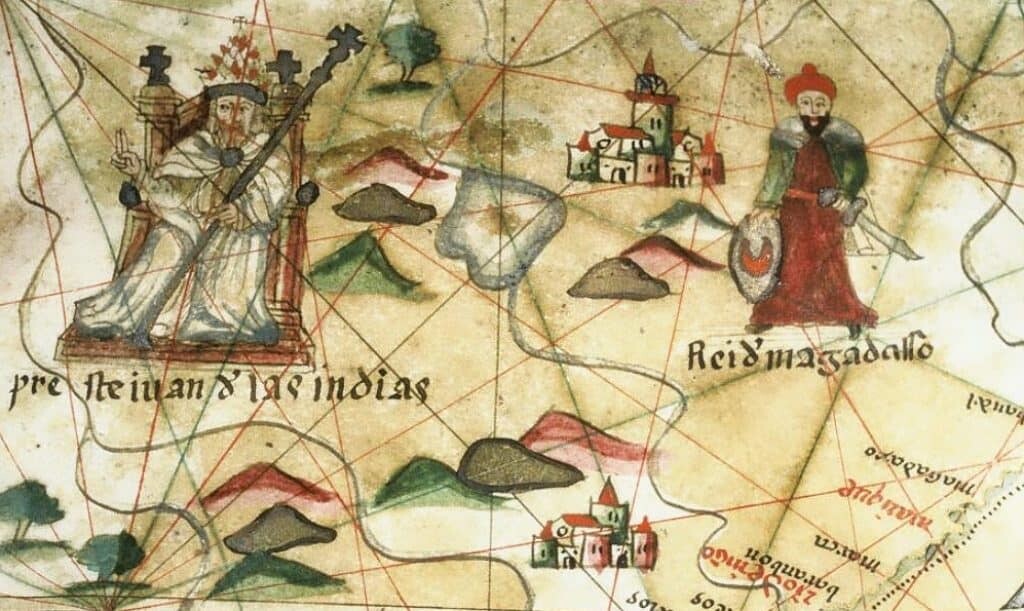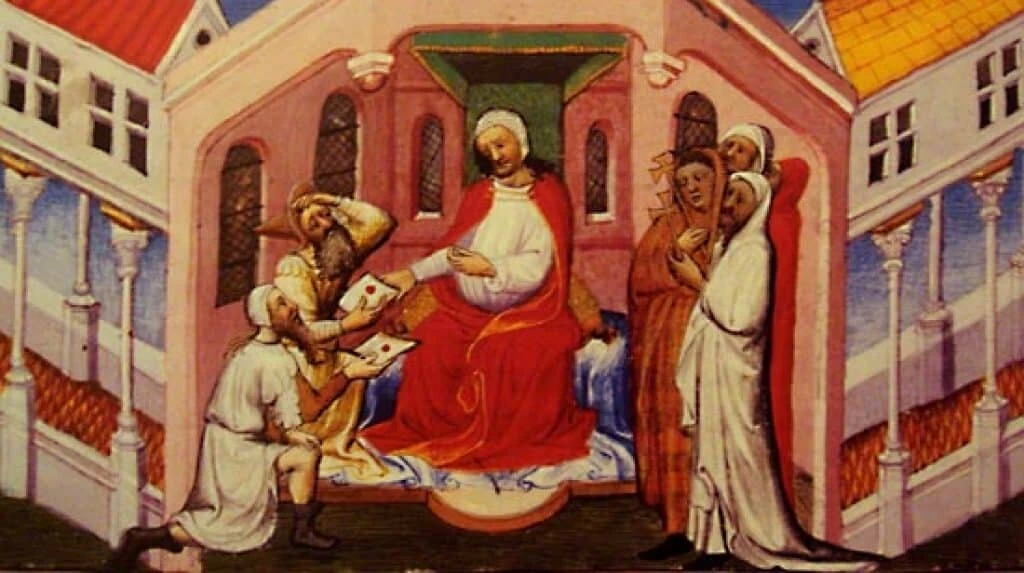Many explorers were inspired by the Prester John legend.
European history is filled with stories of fabled foreign lands possessing great wealth and beauty. Those tales were usually believed to be real until explorers scoured the Earth and abandoned quests for those lands when they came up with nothing that could prove the stories. One particularly persistent and wonderful tale is the Prester John legend (or “Elder John”). Legends told that he was a king who ruled over a secret and mysterious country. But was he really only a legend?

The Legend
The Prester John legend describes a King who was also a Christian leader from a faraway land. His Christian kingdom was lost in the midst of Muslim and pagan nations, but the story told that the Patriarch of St. Thomas resided in this land. Reports allude to a country where pepper grows and people ride elephants, and where the Gates of Alexandria and the Fountain of Youth exist near an earthly paradise.
“The legend begins in earnest in the 12th century with two reports of visits from an archbishop of India and of a Patriarch of India to Rome at the time of Pope Calixtus II (1119-1124)”. Supposedly, there are about 100 letters that reference Prester John. A number of the letters originated from Roman Jews in the Hebrew language. Evidently, there was as much confusion about his location then as there is now. However, it appears there is a stronger argument for him originating in India from a place called Malabar. (Chronicles of Malabar).
The journeys in his search explored parts of India, Ethiopia, Central Asia, and remoter parts of Africa. Like other undiscovered countries, there were few concrete clues. The recurring story was that Prester John’s land was full of massive riches and beautiful and unusual animals unique to John’s nation. Additionally, legend indicated that one of the Three Kings of the nativity story in the New Testament was one of John’s direct ancestors. This may be a result of the possible journey of the Apostle Thomas to India who spread the gospel there.
Searching for the Christian King
In the 1100s, the first known recorded citations of Prester John and his lands are mentioned by Bishop Otto of Freising (in modern-day Germany). Roman writers of the time soon followed. Pope Alexander III believed so deeply in the possibility of such a country, that he sent a physician emissary from the Vatican to find more information about John and (hopefully) about the country itself. Mysteriously, the man never returned.
Related: The Legend of Sawney Bean
More controversy followed in the 1160s when a letter from John himself gave clear and lengthy descriptions of lands he declared to be a paradise on Earth. Researchers eventually declared this epistle to be a forgery.
Marco Polo, who lived between 1254-1324, reported that Prester John was the Khan of the Kareit people. They were a Mongolian tribe made up of Nestorian Christians.

Some time later, Portuguese missionary explorers went to Africa to ask for John’s help in converting Muslims to Christianity. From the opposite direction, the year 1306 saw the arrival from Ethiopia of 30 ambassadors. They not only described the magnificent sites of their homeland but stated that Prester John was the leader of their Christian church. Later, a missionary traveling through Africa stated that he had heard many stories about John’s lands. However, he was unable to see them for himself.
Becoming a Myth
Over time explorers had discovered most parts of Asia and Africa. However, they found nothing to substantiate the legend. Hence, John and his lands slipped into the realm of folklore. Shakespeare makes reference to Prester John and his country in his play “Much Ado About Nothing.” Also more recently, the legendary king shows up in quite a few comic books!
You May Also Like: England’s Great Outlaw, Robin Hood: Real or Legend?
Prester John and his lands eventually became one of the legendary countries that people believed to exist in former times. Legend still has it that costly, but futile, expeditions went into lands around Asia and Africa to set up friendly relations with John.
Those journeys and the written records about them add Prester John’s kingdom to the list of legendary utopias around the world. But it was not all in vain. Explorations to find John’s land yielded accurate and detailed information about lands that had never been seen by Europeans before.
References:
Wikipedia, 2017
The History Guide 2017